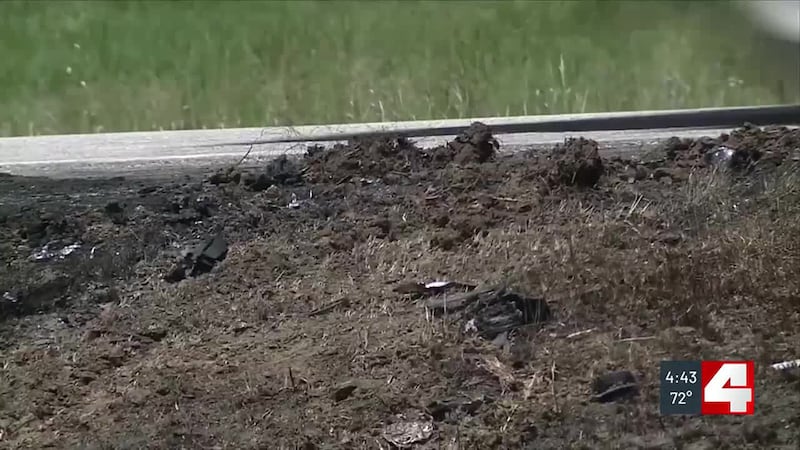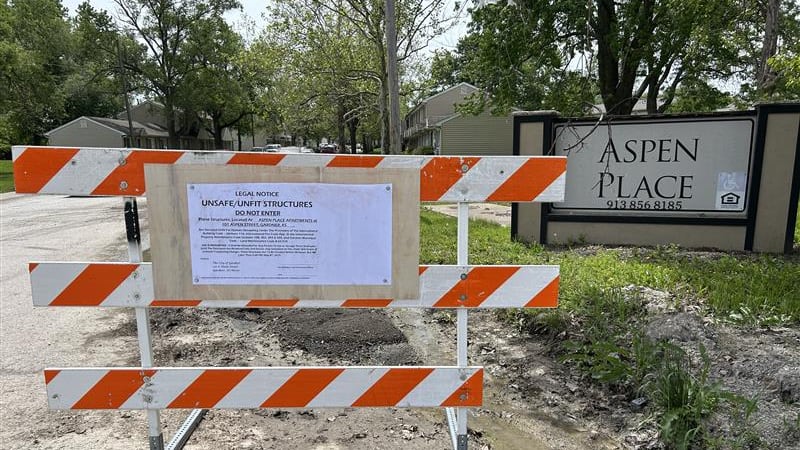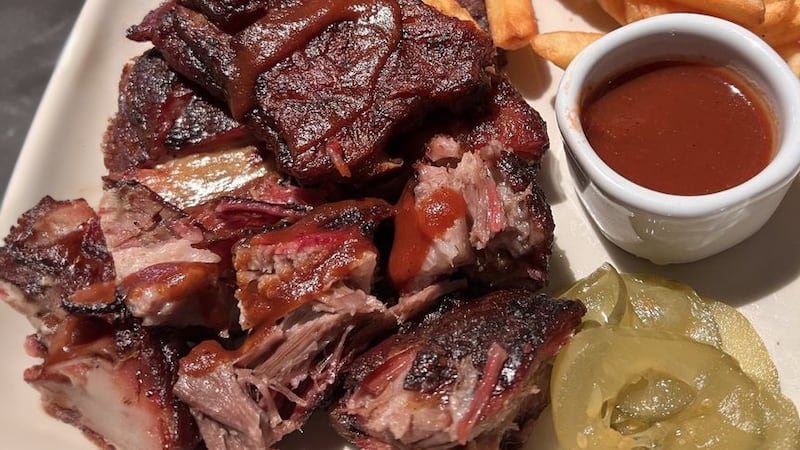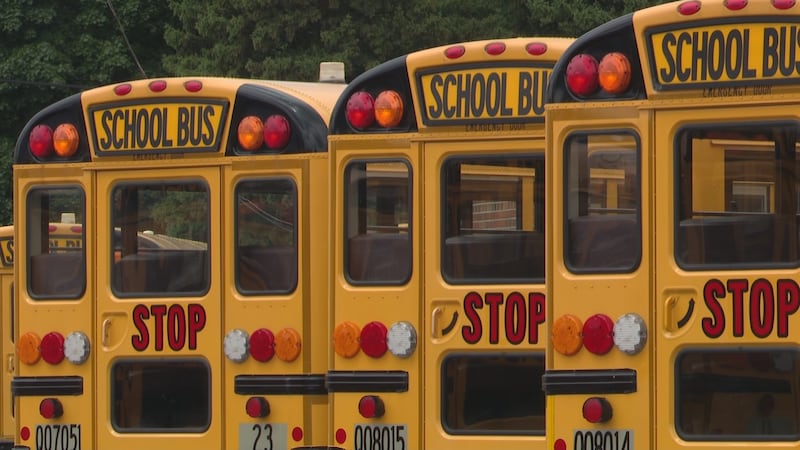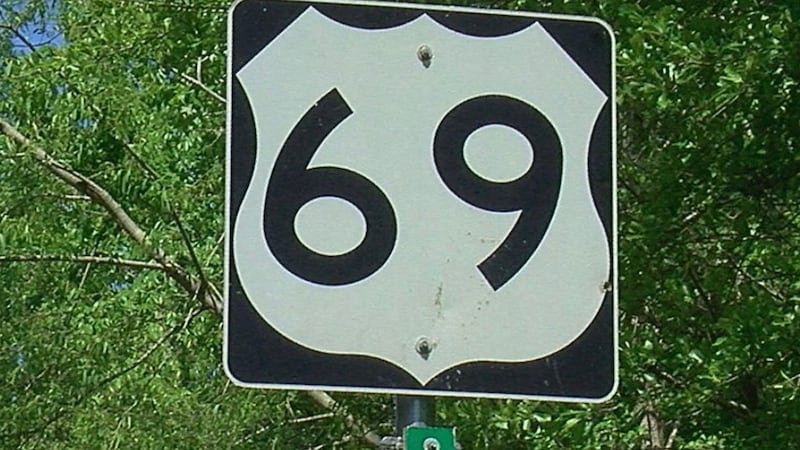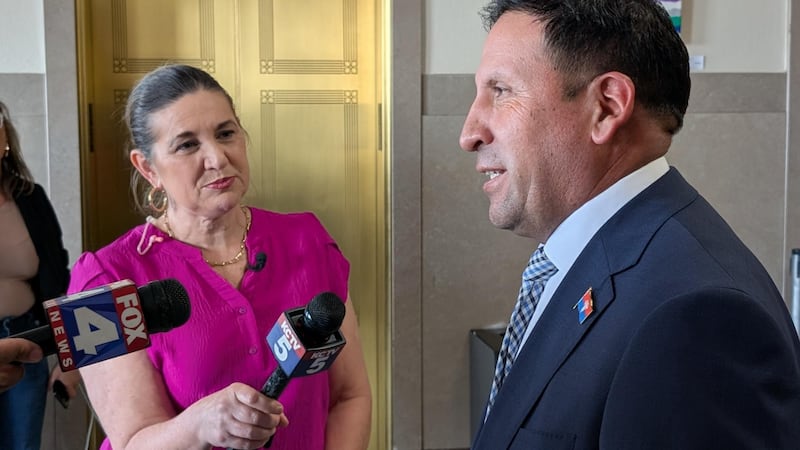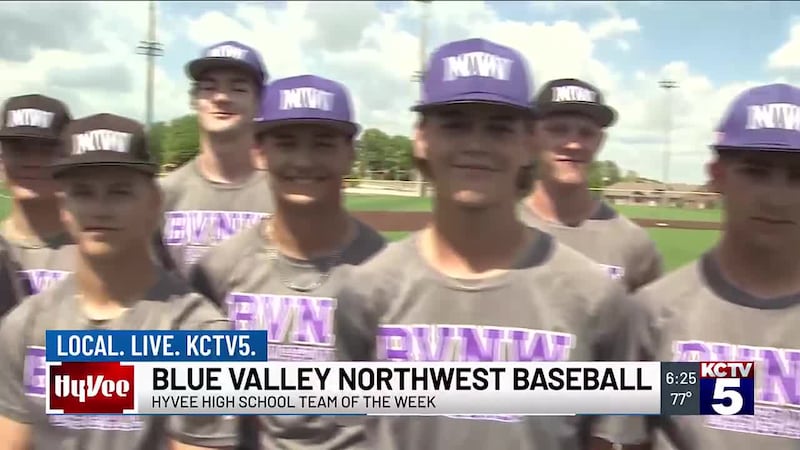Drilled and drained: A family’s fight to break free from the legacy of oil
MIAMI COUNTY, Kan. (KCTV) - When you think of Kansas, you think of sunflowers and wheat fields. But Kansas also has an oil legacy — a legacy that some want to end.
You might be surprised to learn that Kansas is the ninth-largest oil-producing state. It’s an active industry.
Last year, 27 million barrels of oil were produced. This “liquid gold” supports jobs, provides income for families, and, according to the Kansas Department of Commerce, has generated $1.4 billion in state and local tax revenues over the last 10 years.
There are thousands of abandoned wells in Kansas that no longer produce oil. Those abandoned wells are environmental hazards that jeopardize public health and safety by contaminating groundwater, emitting noxious gases like methane, littering the landscape with rusted and dangerous equipment, creating flooding and sinkhole risks, and harming wildlife.
It’s complicated
In a report from the Kansas Corporation Commission, there are 5,285 abandoned wells “requiring action,” meaning the KCC gave them a priority of one or two. That’s only five fewer than last year, despite active plugging operations. That’s because more wells are found every year.
Capping them takes time and money. In 2021, the federal government provided $4.7 billion for “orphaned” or abandoned well capping. More than $58 million of that went to Kansas.
However, it costs between about $6,000 to $14,000 to plug each well, and there is nothing simple about the problem or how to fix it.
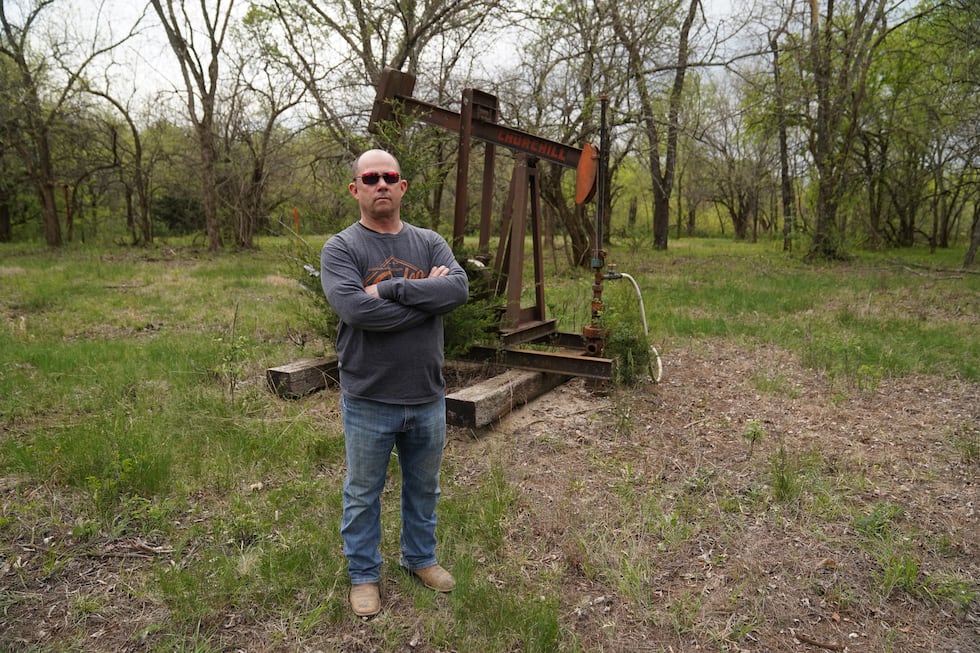
Part of the problem is many wells are so old that there aren’t even records of who is responsible.
In many cases, the people who own the land never wanted or profited from the wells and are now left with the mess.
One family’s story
Ken Derr bought 240 acres in Miami County in 1979. The farm was passed to sons, and now grandsons.
“I’ve been out here since I was four years old,” said Carl Derr. “So it’s the only place I’ve ever known.”
The farm has cattle, horses—and the legacy of oil.
Wayne Derr has the old paperwork on the farm and told us the government purchased the land from Native Americans in 1854. Drilling came later, but it’s unclear exactly when.
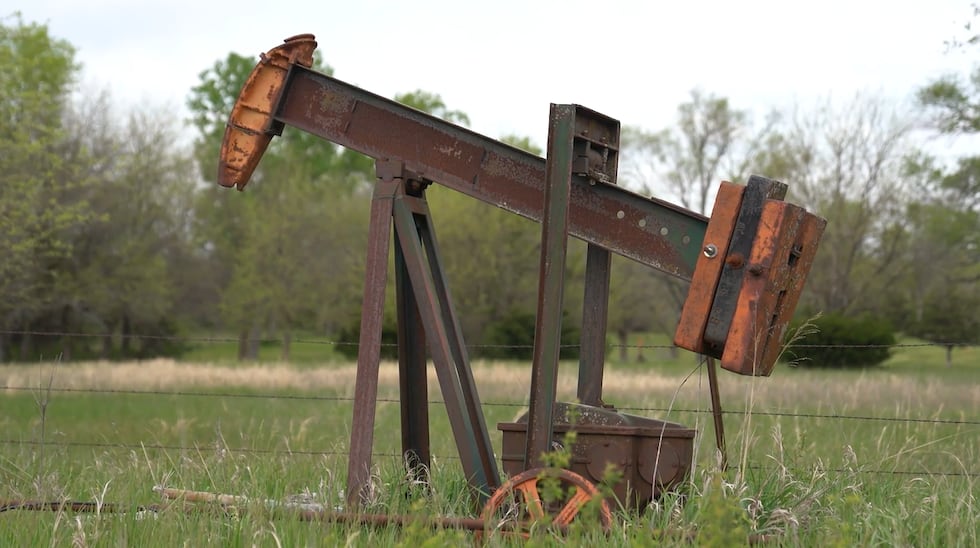
ALSO READ: Legacy of service: Kansas City man remembers father who paid ultimate sacrifice in WWII
“He sold the mineral rights somewhere between ‘26 and ‘30,” said Wayne Derr. “It’s been downhill ever since.”
Selling mineral rights was frequently done as one way to save the family farm during some tough years, especially during the Great Depression. Paperwork shows that in 1961, the land was sold without the mineral rights separating ownership.
Here’s how it works:
- One person owns the land
- Someone else can own the mineral rights
- Others (usually oil companies and investors) lease those rights
Landowners get a cut for their trouble, more if they also own the mineral rights, but they can get left with a mess when the project fails.
Abandoned wells dotting the landscape - and the ground
You’ve probably seen remnants of once-productive wells as you drive across the state. When the oil dries up, or it because too costly to get to it, some companies just leave the equipment. The state can sell the equipment as a way to recoup the cost of plugging.
The Derr farm has about 40 abandoned wells on the property. Carl Derr refers to them as minefields. You have to watch where you step. Some of them leak.
But his farm never struck it rich.
“I don’t want to be in the oil business. I have no desire to be in the oil business,” said Carl Derr. “I would like to see them all abandoned and abandoned properly. So that they’re not a hazard.”
The Derrs are not alone. While out driving, the KCTV5 Investigates team noticed an oil pump leaking on farmland where crops are grown. They stopped to talk with the property owners, Robert and Clara Ann Kempnich.
“This here ain’t the only spill around you know,” Robert told us. “the other guys, they got oil spills on their place, too.”
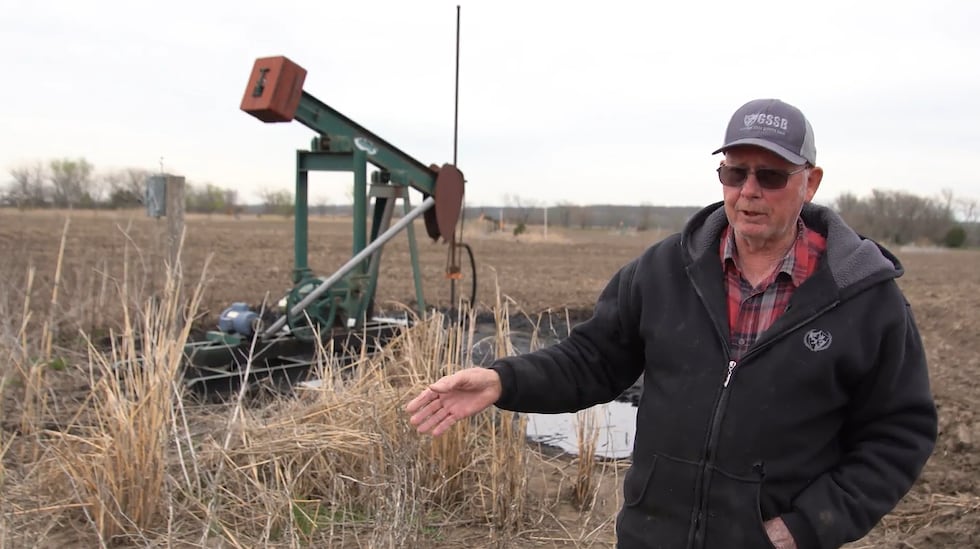
ALSO READ: Wrongly branded as a felon for decades, Kansas City great-grandmother secures court victory
Kempnich said the company that owned the lease went bankrupt, so it sits in limbo. They have sued, along with their neighbors, arguing abandonment. The issue is still before the court.
“It’s really frustrating,” said Robert Kempnich.
Put a lid on it
Recently, an abandoned well on the Derr’s property was capped — one of those paid for through that federal grant. But there are dozens more. And the Derrs want them all capped.
The list keeps growing as more landowners come forward.
“People are afraid to report abandoned wells because they don’t want to be responsible for them,” said Ryan Hoffman with KCC.
The Derrs just want to be done with the oil business and the wells that came with it.
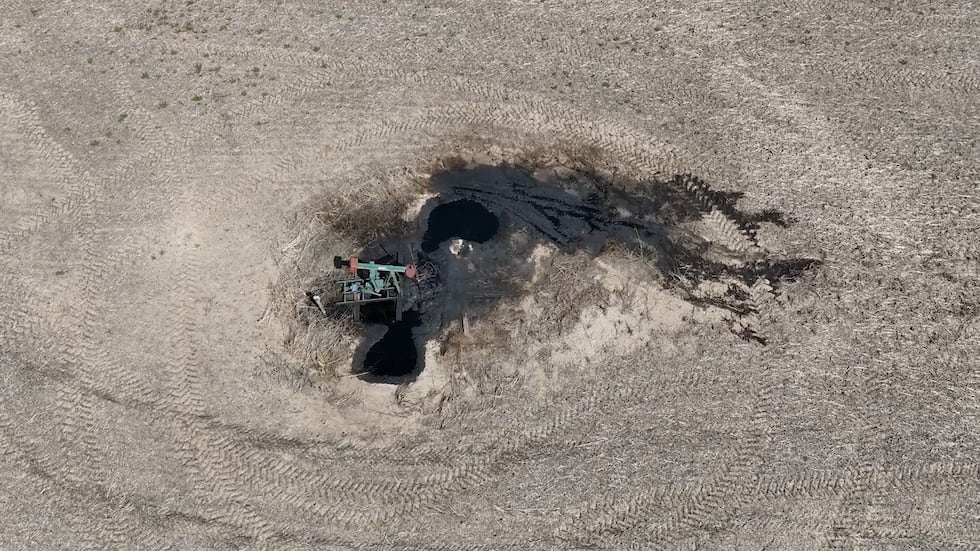
About a decade ago, Wayne Derr bought the mineral rights for the wells on their land. And earlier this month, after years of trying, the family finally acquired the lease.
“Oh yeah,” said Wayne Derr. “We are going to be done.”
They’ve finally been able to reclaim all of their family farm. Not only the land, but also what lies beneath. They want all the abandoned wells on their land capped and hope to be part of the next state grant earmarked for abandoned wells.
Gray Television partnered with ProPublica for investigative reports on orphaned wells. You can read the report from Gray’s InvestigateTV here.
For more KCTV5 Special Reports, click here.
Copyright 2024 KCTV. All rights reserved.
